When we think back on our artistic life and how we began and progressed, which for me started 42 years ago; a huge part of our journey is the milestones and turning points we experience. I began by studying classical tonal oil painting for four years through a private teacher (Helga Ivanyi) unconnected to any art school, but who had the same training as her teacher who was part of the Max Meldrum school in Melbourne, Australia. Max was a Scottish-born Australian artist, teacher, art theorist and the founder of Australian tonalism. As much as I was eager to paint in full colour, during my first year I was solely restricted to monochrome subjects, predominately in still life. Those four years honed my skill to observe and interpret the fundamentals to paint any subject. It wasn’t until many years later that I truly appreciated the benefits that training gave me, much of which is now automatic to me in how I plan and paint a subject or how I use it as a fallback, regardless of which medium I’m using, to get myself out of trouble, so to speak.
One of my turning points was about 10 years later when I discovered soft pastels. I can’t say it was a magical moment where I just fell in love with pastels, but rather that pastels filled a need for me. You see, I had young children then and I was also working part-time. Pastels allowed me to paint – all day, for one hour or five minutes, and all I had to do to suddenly stop and pick up the kids from school, or run an errand, or go to an appointment, was to go and wash my hands…and sometimes my face! How simple is that! No thinking about timing to stop painting and washing brushes, etc. Just put down the pastel, take off my apron, go and wash hands, and continue later when ready. Discovering pastels simplified my painting time and life dramatically. Painting in pastels made it so much easier to snatch extra short moments to paint, and thankfully we had a spare room for me to leave my easel and pastels out, before being lucky enough to have the purpose-built studio in my home for the last 30 years. Having a dedicated painting spot in your home or elsewhere where you can leave your equipment out, is so important to be able to paint regularly. It doesn’t have to be a ‘studio’ per se.
At the time when I switched to pastels, I hadn’t heard about Unison Colour pastels as they weren’t available in Australia back then. Seeing the Unison Colour sets of half sticks now on offer, I’m reminded of my own start. I had purchased a 90 half stick set of Rembrandts. The half sticks made having an artist-quality set so much more affordable whilst also providing more colour choices than starting with fewer full sticks. I then gradually built my set in full sticks, usually 3 values of the one colour and later boxed sets of Unison Colour, eventually having the whole Unison range. Often my students come along to workshops with student-quality pastels (you would probably know which ones they are in your country), which may have vibrant colours, but they are full of filler and shed so much pastel dust. On top of that, their learning experience is restricted when using student pastels, which limit pastel layers and fill the paper tooth quickly – even if also mixed with artist-quality brands. We know that student pastels will fade, thereby affecting the luminosity and values in a painting over time, which is another reason to avoid them.
With that said, I feel the Unison Colour 120 half stick set is an even better way to start than I did, although I would love a few more of the colours that I use in my water subjects instead of greys. The more colours the better, although I often mix mine using soft glazes. Given that many painters initially don’t like to break their pastels, the half sticks take away the angst too. Once you’ve dropped a few, it somehow doesn’t seem to matter as much! The 120 half sticks could also be a great field box set for ‘en plein air’ painters, especially if travelling by plane or even for attending a workshop.
Unison Colour pastels have been my go-to pastel for a very long time now so I’m delighted to be chosen as one of their Associate Artists – perhaps it will be another turning point for me! Sure, I have other brands, some won as prizes and others were bought, mostly a long time ago. Like any medium, trying other brands gives insight into what pastels suit our style of painting. They are like candy in a lolly shop – you simply have to try them! There are now lots of very soft buttery pastel brands available, and all have their place, especially if you paint quite lightly; as well as the usual harder pastels that to my mind also include Conté. I do use the occasional extra soft pastel, usually a light value. What sold me on Unison Colour pastels however almost 30 years ago, was not just their colour range, but also their versatility and superior quality. Their pastels didn’t shatter in my hands when pulling off the wrapper, nor were any of them scratchy. Although I mostly paint with the side of the pastel, if I want, I can use my Unisons for quite a while before taking off its wrapper, which is another benefit of the half sticks – no wrappers. You can even replace the half sticks by then purchasing single full stick replacements, break them in half, and voila – you have a spare to fill a space again later. Hmm…will this be my new travel set with a handful of extras?
As pastellists, we know how important pressure is in applying pastel, whether in layers or as a colour block. I can’t help but be won over and impressed with the Unison Colour range that seems to mimic nature and our environment. Their degree of firmness or softness if you prefer, offers a versatility that most others don’t and are a dream to apply. For me, Unison Colour pastels are a perfect fit, being firm enough so I can draw with them, yet still soft enough to build up several layers without filling the paper tooth quickly. Although they are also buttery, they offer something in-between to all the other pastel brands, which I believe, makes them different and so versatile. There is no doubt in my mind, that painting with pastels is also a faster way of working and allows for rapid adjustments or corrections. Even though I also paint in other mediums, pastels will always be a part of the artist that I am.
Exhibiting, teaching, turning professional and my painting tours have been other important turning points for me. These days I paint about half in oils and half in pastels, although in my teaching I’m generally asked to give pastel workshops or pastel demonstrations. I also really love pen & wash for quick ‘en plein air’ sketches, especially when travelling and on the move, and sometimes use a pastel pencil with a watercolour wash instead. That’s been a more recent turning point for me. I invite you to consider what yours have been, or better still, what do you want your next one to be?
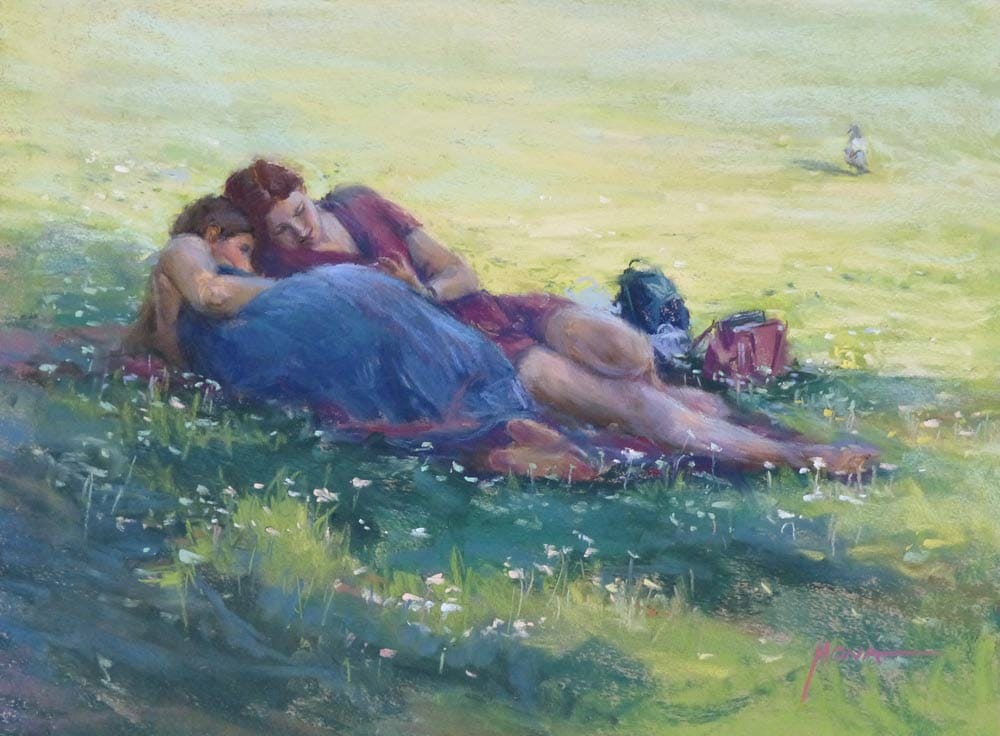
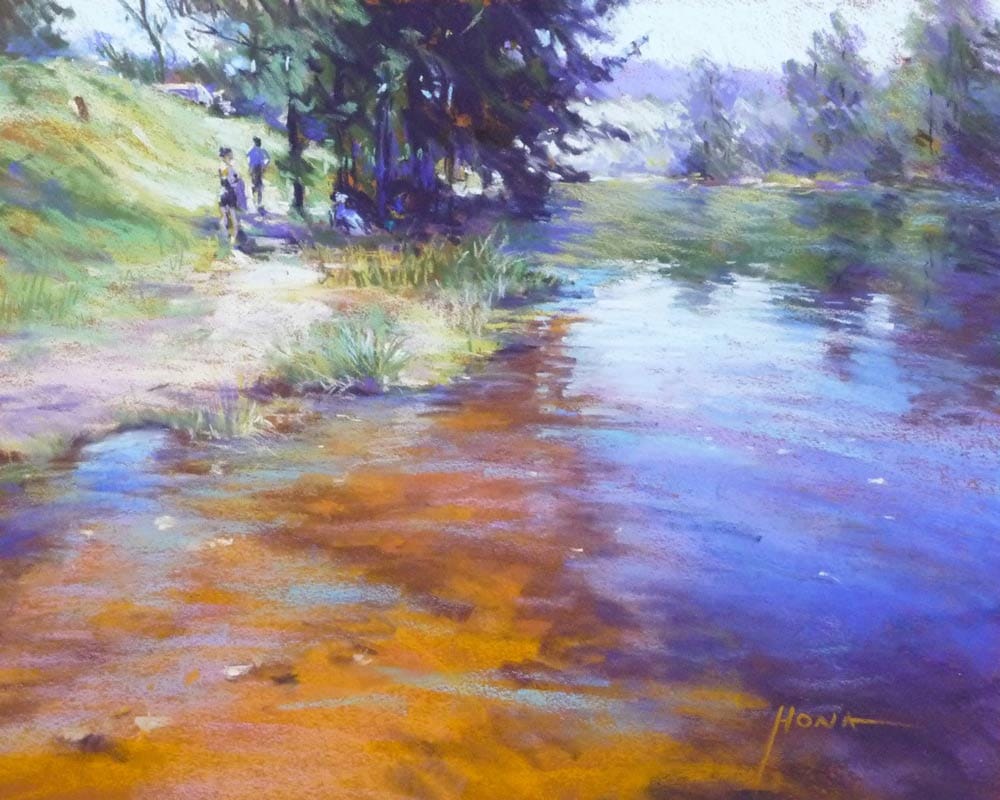
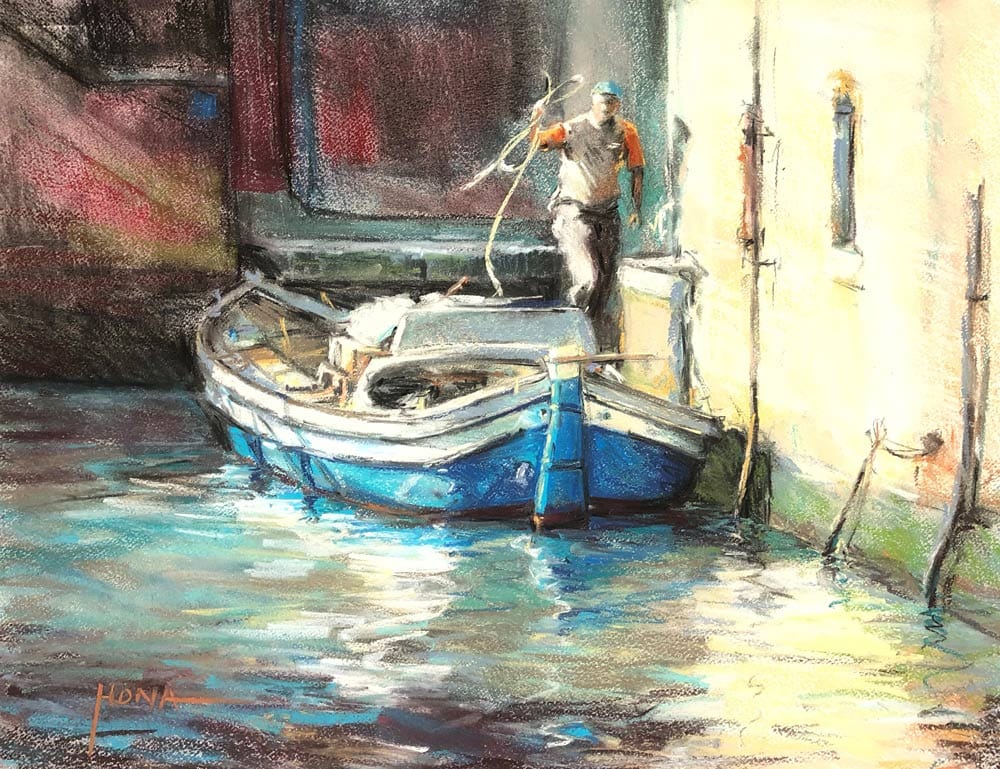
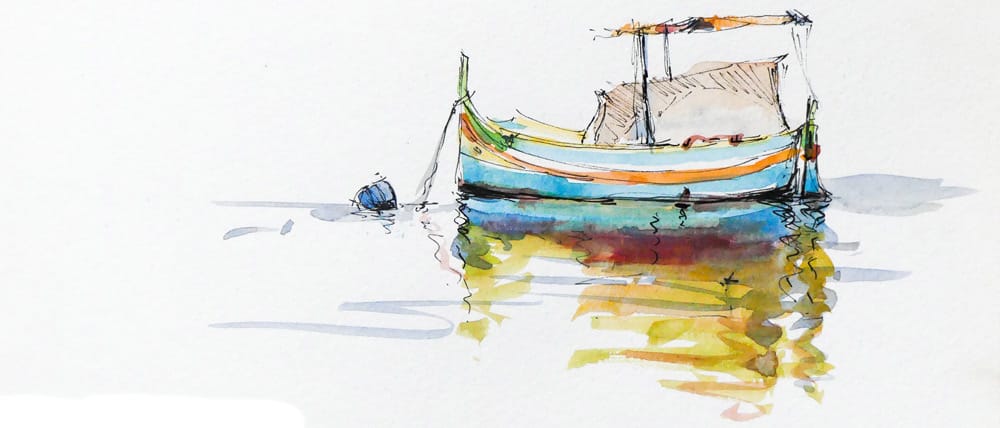
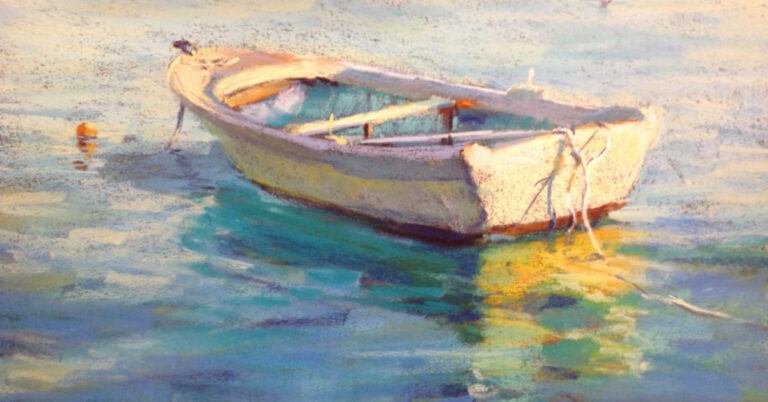
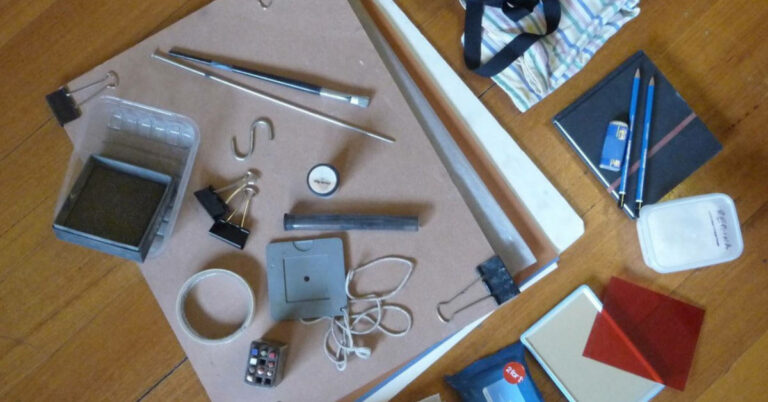
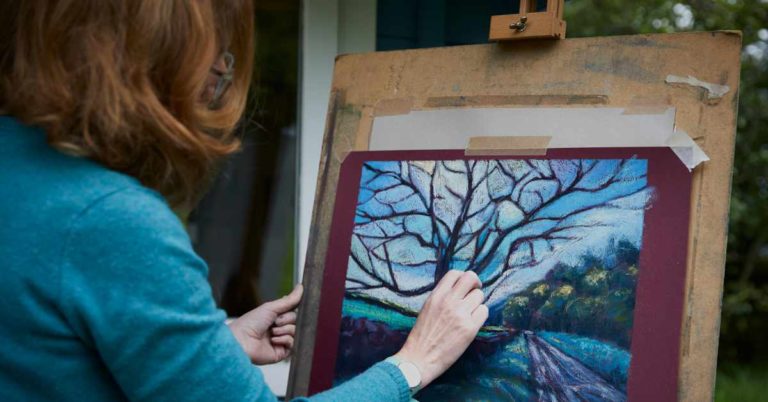
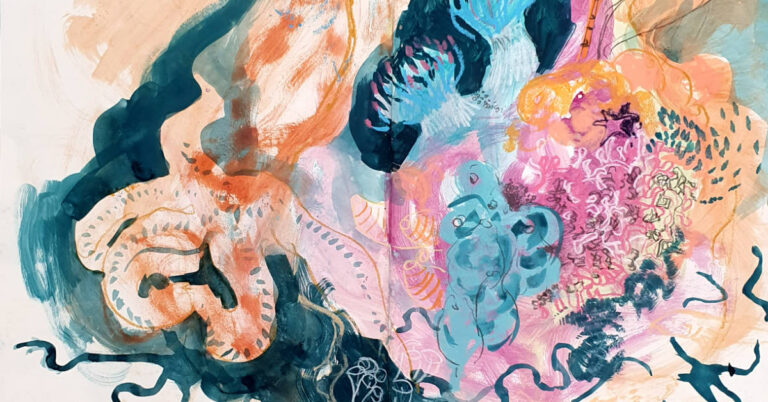
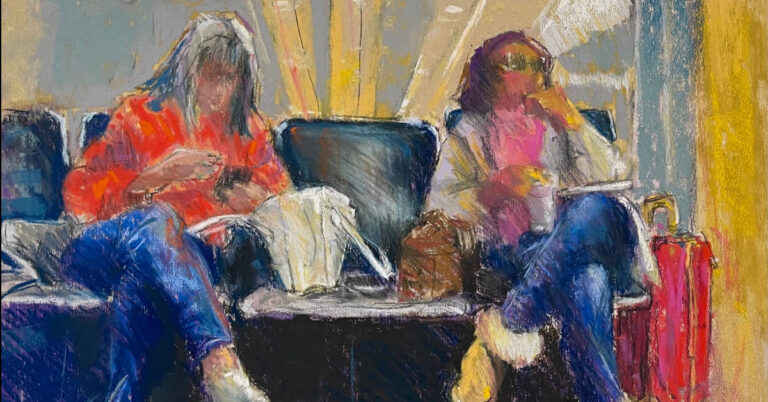
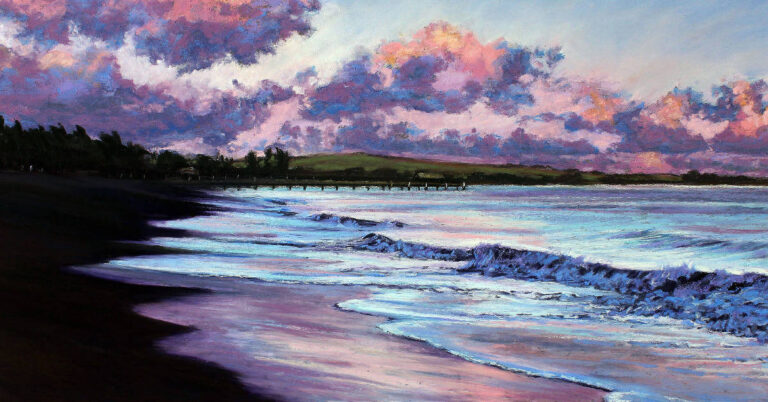
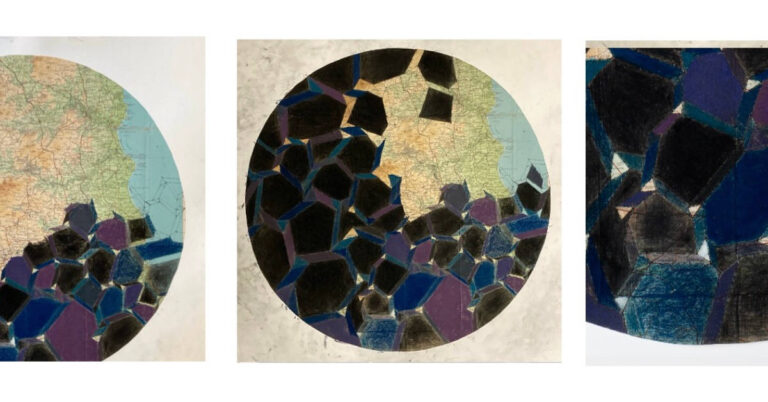
2 Responses
Lovely to hear about your artistic journey Regina and beautiful work.
Thank you Tricia.